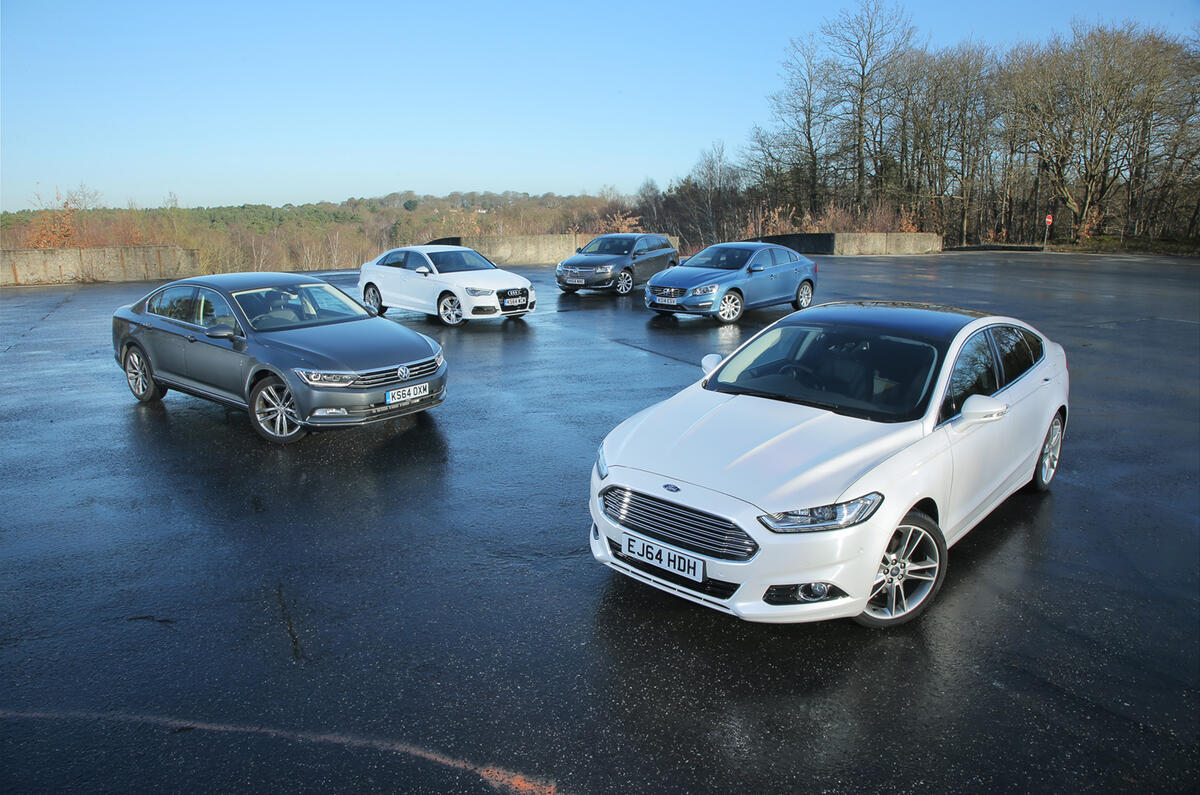The reasons not to buy a traditional family saloon now seem so numerous and widely acknowledged that to put such a car on your driveway would almost risk social stigma.
Our heads haven’t been turned away from these conventional, mid-market cars so much as spun like upturned castors. Those who haven’t either downsized or been lured upmarket are probably now driving a crossover, compact SUV, MPV or estate. Somewhere along the line, ordinary saloons became that bit too ordinary.
Read more about what we think of the dependable Ford Mondeo
Time for a fightback – perhaps. But how much fight has the humble, mid-sized, volume-branded four-door got left? What happens when you reimagine and readdress one of the oldest vehicle concepts of them all for the modern motoring setting? Just how appealing are the results?
You could not ask for more dependable exponents of the type than the latest Ford Ford Mondeo and Volkswagen Passat. Both are all-new models from blue-chip European car makers with impeccable pedigrees. And here’s some good news up front: both breathe new life and transformative allure into a grand old market niche once too big to be described as such.
At the risk of spoiling the next couple of thousand words, each of these cars would make a fine, appealing alternative to any family car, premium-branded or otherwise. Don’t feel sheepish if you end up quietly wanting one. Dismissing them out of hand would be a much bigger offence.
Only one can win through this opening part of our saloon car comparison, of course – and for that car, a greater challenge is in store. But initially, the yardsticks against which this pair will be measured are threefold.
Their nearest and bitterest rival, the Vauxhall Insignia, is present because no Mondeo group test could happen without the successor to the huge-selling Vectra and Cavalier. Steadily moving upmarket, next in wait lies Volvo’s S60, fitted with the recent and creditable D4 diesel engine. After that comes a true premium German test of mettle in the shape of the Audi A3 saloon.
The cars are assembled in relatively high-output 2.0-litre turbodiesel guises. Power outputs range upwards from the Ford’s 178bhp to the Vauxhall’s 192bhp, and peak torque is an identical 295lb ft in all but the Audi. Each hits 62mph in nine seconds or less, all bar one qualify for benefit-in-kind taxat a comparable rate, and each can be leased on typical company terms for less than £400 per month. And still, a careful eye will identify one true bargain from the pack here – while a decent drive unearths plenty more.
































































Join the debate
Add your comment
Matt - I suspect readers won't see this but you might.
Seems odd that the Skoda
The reason these cars exist, and why people still get them over cross-overs / SUV's is emissions. The crossovers and SUV's are usually in the realm of 150g/k upwards, whereas a 150 BHP hatch/saloon can be got easily in the 110g/K range, that's a big tax difference.
They are also very good cars. SUV's might be more fashionable, but only dummies buy cars because they are fashionable.
Still, that means plenty of cheap 3/4 year old cars for those with a bit of sense.
Baldersash
End of story